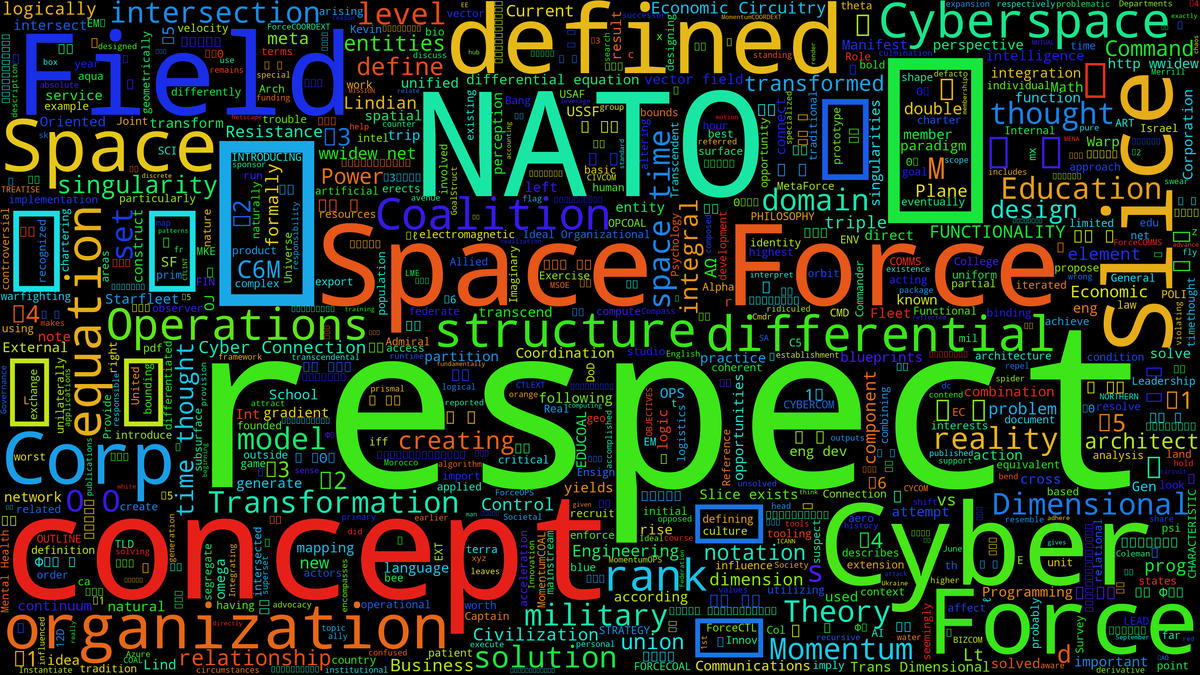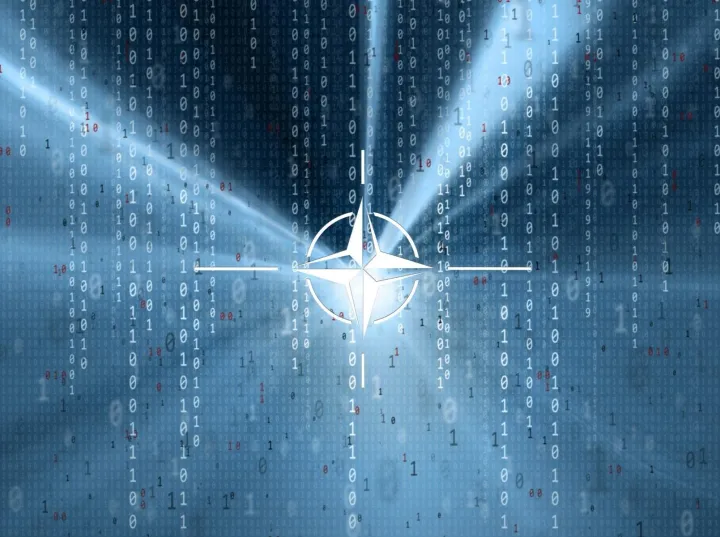NATO Cyber Force

Executive Summary
Cyber threats have escalated into a paramount challenge for NATO, demanding a unified and strategic response. Cyberspace has become a contested domain, with malicious cyber activities occurring daily against allied governments, militaries, and critical infrastructure. Adversaries—state and non-state—are increasingly leveraging cyber operations to achieve strategic goals without ever firing a shot. This paper advocates for the creation of a NATO-level Cyber Force to harness the collective capabilities of member states in defending against cyber attacks and conducting coordinated cyber operations. Such a force would enhance NATO’s deterrence posture, protect allied economies and societies, and ensure unity in the face of digital aggression. In summary, a dedicated Cyber Force under NATO auspices is both necessary and beneficial: it would provide integrated defense, faster response to threats, improved intelligence sharing, and a strong signal of Alliance resolve in the cyber domain. Establishing this capability now will position NATO to effectively counter current and future cyber warfare challenges.
Strategic Necessity
Modern warfare is no longer confined to land, sea, air, or space – cyber warfare has emerged as a critical fifth domain of conflict, with an even broader cognitive dimension. NATO recognized cyberspace as an operational domain in 2016, affirming that cyber defense is as integral to collective security as traditional military defense. Since then, threats have only grown more sophisticated. Crucially, the “future of cybersecurity is not defending against ‘bits and bytes’ network attacks but rather the manipulation of human perception.” In other words, hostile actors target not just networks but the minds of our soldiers, citizens, and leaders – blurring the line between cyber warfare and information warfare. This expanding battlespace demands a unified NATO response. Military strategists note that “the future – and increasingly present – of CYBER is WARFARE,” and that those serving in cyber roles must become true “Cognitive Warriors.” In practical terms, this means treating cyber operations with the same seriousness and coordination as traditional combat arms. A NATO-level Cyber Force would embody this shift, ensuring the Alliance can operate and prevail in cyberspace just as it does in other domains.
Military and Cybersecurity Defense
From a defense standpoint, the threats we face in cyberspace are pervasive and pressing. State-sponsored cyber attacks routinely probe NATO networks and critical systems for weaknesses. Adversaries like Russia, China, Iran, and North Korea – as well as non-state groups such as ISIS – have all demonstrated cyber capabilities aimed at NATO members. These range from espionage and intellectual property theft to sabotage of infrastructure and military command systems. NATO’s current military structures, however, evolved primarily to address physical threats, not digital ones. As a result, there is a structural gap in our collective defenses. It has become evident that current iterations of military structure were designed to combat and defend physical, not mental, threats. Therefore, in order to face emerging threats, a re-architecture of military structure should be high on the priority list.
A NATO Cyber Force would fill this gap by providing a permanent, specialized structure for cyber defense and operations. It would leverage NATO’s combined technical expertise and resources to harden critical systems, employing advanced measures (such as zero-trust security architectures and active cyber defense techniques) across the Alliance. Crucially, a collective force would also ensure that no single member’s vulnerability can be exploited to compromise others – a principle at the heart of NATO’s shared security. By uniting under a single cyber defense strategy, NATO can better detect intrusions, rapidly contain and neutralize attacks, and protect allied military effectiveness even under intense cyber assault.
Geopolitical Considerations
Geopolitically, NATO’s adversaries are using cyber operations as a means to undermine Alliance cohesion and erode the political will of member states. They pursue objectives that stop short of provoking a conventional military response, yet can inflict serious strategic damage. Russia’s interference in the 2016 U.S. elections and widespread disinformation campaigns have highlighted how cyber-enabled influence operations can sow discord within and between democracies. China has likewise engaged in large-scale cyber espionage and propaganda related to the COVID-19 pandemic, seeking to shape narratives and exploit divisions in Western societies.
Such campaigns are designed to exacerbate internal tensions in NATO countries – reducing public trust, polarizing politics, and even straining relationships among Allies. A NATO-level Cyber Force would directly counter these efforts. By pooling intelligence on malign cyber activities and coordinating responses, the Alliance can present a united front against cyber aggression. This includes jointly attributing state-sponsored attacks, exposing adversary tactics, and responding with calibrated countermeasures (diplomatic, economic, or cyber). Moreover, an Alliance-wide cyber force could proactively support member states in protecting their political processes and public discourse from foreign interference. In the long term, such unity in cyberspace will reinforce NATO’s geopolitical strength, signaling to adversaries that any cyber attack or influence operation against one member will be met with the collective resolve of all 30 Allies.
Interoperability Benefits
A core advantage of a NATO Cyber Force is the significant improvement in interoperability and coordination it would bring to Allied cyber efforts. Cyber defense is inherently a team endeavor – information must be shared in real time, and responses often require cross-border collaboration. NATO already serves as a platform for Allies to consult and share cyber incident data; a dedicated Cyber Force would take this to the next level, ensuring seamless cooperation across the Alliance. Key interoperability benefits include:
-
Real-Time Intelligence Sharing: A NATO Cyber Force would enable rapid exchange of threat information and alerts among member states. NATO has emphasized the importance of enhancing information-sharing and mutual assistance in responding to cyber attacks. A formal force would institutionalize secure channels and joint intelligence centers, so that a malware indicator or attack signature seen by one nation’s sensors can be immediately distributed to all.
-
Coordinated Response and Defense: Rather than each nation reacting in isolation, cyber response teams could coordinate under a unified NATO command structure, much as allied air forces or navies do. This ensures that defensive measures (patching, isolating networks, neutralizing threats) are synchronized and that no ally is left to fend off a major cyber attack alone.
-
Standardization of Tools and Training: A NATO Cyber Force would develop common standards for cyber defense tools, protocols, and training across all members. Interoperability in cyberspace means, for example, using compatible encryption and secure communications, adhering to agreed procedures for incident response, and training cyber operators to a baseline NATO competency standard.
-
Collective Cyber Exercises and Drills: Regular joint exercises build trust and improve the speed and effectiveness of multilateral responses. Initiatives like Cyber Coalition and Locked Shields can be expanded to practice allied cyber operations in ever more realistic scenarios.
-
Resource Pooling and Expertise Exchange: Not all NATO members have equal cyber capabilities; a collective force would enable smaller nations to leverage the expertise and resources of larger ones. This force-multiplier effect means the Alliance’s overall cyber resilience is raised to the level of its most prepared members, rather than being limited by its least prepared.
In sum, a NATO Cyber Force would create a tighter weave of defenses across the Alliance. Much as NATO integrated air defense shields Europe as a whole, an integrated cyber defense will ensure that allied nations see threats coming, communicate instantly, and react in unison.
Economic and Security Implications
Cyber warfare doesn’t only threaten military targets – it carries grave economic and security implications for all NATO members. A well-orchestrated cyber attack can disrupt essential services, financial markets, and civilian infrastructure on a massive scale. This is not hypothetical: we have seen malware causing billions of dollars in damage worldwide. A successful attack on banking systems, energy grids, or transportation networks in one allied nation could quickly ripple across borders, undermining economic stability and public safety throughout the Alliance.
By improving collective cyber resilience, a NATO Cyber Force will help protect national economies and civilian life from major disruptions. It would coordinate protective measures across countries to avoid gaps – for example, ensuring strong cybersecurity standards for power plants, telecom networks, and other vital systems. Enhanced cyber resilience is key to mitigating the potential for significant harm from cyber threats. Preventing a “cyber 9/11” scenario through vigilant collective defense is an economic imperative as much as a security one. Through this initiative, NATO will ensure that the digital arteries of our economies – from financial networks to transportation and energy – remain strong, secure, and resilient even under concerted cyber attack.
Policy Recommendations
-
Formalize a NATO Cyber Command and Force Structure
Create a dedicated NATO Cyber Command, analogous to Allied Command Operations for conventional forces, to oversee all Alliance cyber defense and offensive activities. This command would integrate existing entities (such as the NATO Cyber Security Centre, Cyberspace Operations Centre, and national cyber commands) under a single leadership. A clear mandate must be defined, empowering NATO Cyber Command to coordinate defensive operations in peacetime and lead joint cyber missions in crisis or conflict. -
Develop a Cyber Rapid Reaction Team Capability
Assemble multinational “cyber rapid reaction teams” that can be deployed on short notice to assist any Ally facing a significant cyber incident. These teams, composed of top cyber experts from across member states, would be on standby for emergency deployment. In the event of a crippling cyber attack on a nation’s critical systems, NATO could dispatch this team to work alongside the national cyber defense authorities. -
Institutionalize Joint Training and Exercises
Expand NATO’s cyber training programs and exercises to prepare the Cyber Force for coordinated action. All member states should participate in large-scale annual cyber defense exercises (such as Cyber Coalition) under NATO coordination, with scenarios that include collective response to attacks on multiple allies. Additionally, establish a NATO Cyber War College or bolster the existing CCDCOE role to educate cyber military leaders in strategy, planning, and tactics. -
Enhance Intelligence Sharing and Early Warning
Build on NATO’s role as a platform for consultation by upgrading Alliance infrastructure for real-time cyber threat intelligence sharing. Deploy secure systems where member states can continuously feed indicators of compromise, tactics observed, and threat actor information accessible to all Allies. A centralized Cyber Threat Fusion Center at the NATO Cyber Command could analyze this incoming data and provide timely warnings and assessments. -
Standardize Cyber Defense Policies and Norms
NATO should promulgate alliance-wide standards for cyber defense and incident response. This includes baseline security requirements for military systems, common definitions of severity levels for cyber incidents, and agreed procedures for requesting and providing mutual aid during cyber attacks. By adopting shared norms, NATO ensures that an attack on one member triggers a predictable, well-coordinated reaction by all. -
Integrate Cyber into NATO’s Deterrence Posture
NATO should explicitly incorporate the Cyber Force into its broader deterrence and defense strategy. Allies have already agreed that cyber attacks could prompt a collective defense response. The Cyber Force would be the instrument to deliver that response. Communicating a coherent doctrine for cyber deterrence – and making clear that attacks on allied networks will elicit a collective reply – helps discourage adversaries from even attempting large-scale cyber aggression.
Conclusion
Cybersecurity is now inseparable from NATO’s core mission of collective defense. The Alliance has reached a pivotal moment: facing relentless cyber assaults and information warfare, NATO must extend its proven formula of unity and strength into the digital realm. By institutionalizing a NATO-level Cyber Force, the Alliance will equip itself to deter, defend against, and decisively respond to cyber aggression on any scale. This initiative offers strategic advantages that mirror NATO’s successes in other domains – just as allied unity proved essential in deterring past threats, so too will allied unity in cyberspace prove decisive in the conflicts of the 21st century.
In conclusion, the creation of a NATO-level Cyber Force is a strategic imperative for the Alliance’s continued security and relevance. NATO has a long history of adaptation and resolve; now it must adapt once more to confront the invisible, borderless battles of cyberspace. By doing so, NATO will affirm its commitment to protect all domains of alliance security and will stand ready to counter threats to “the mind and the byte” just as staunchly as it counters threats to the land, sea, and air. The establishment of this force will secure peace and stability for allied nations in the digital age.


